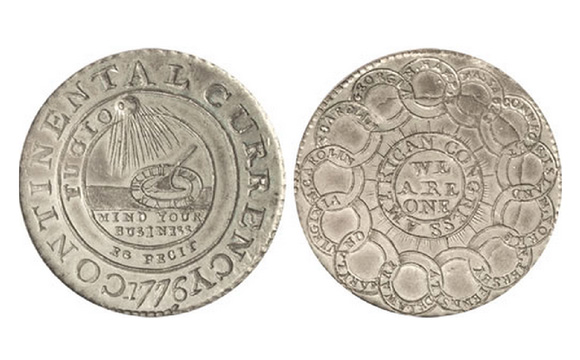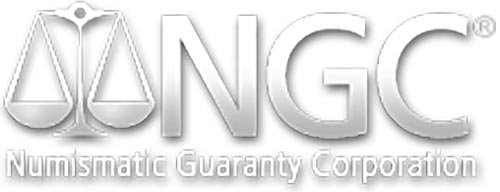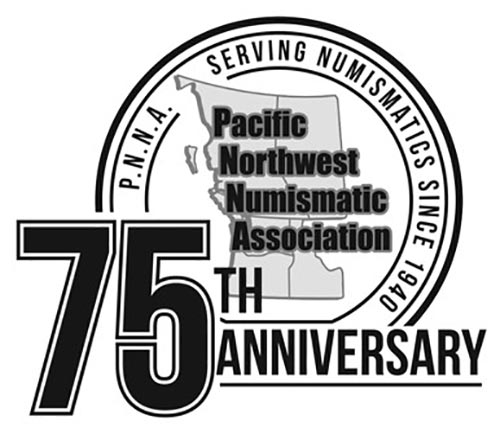
Every 4th of July we celebrate the day we declared our independence from England in 1776. But there was also a mysterious coin that was issued the same year. While most experts don’t know much about the coin’s production, one thing is certain: Benjamin Franklin designed it.
Franklin’s design for the Continental Dollar was emblematic of the newly unified country. The front proudly testifies to the coin’s status as Continental Currency, and each colony is represented on the reverse of the coin. This was currency clearly intended to unite and embolden the new republic.
Unlike all the other currency from that era, no records were kept of the Continental Dollar’s production. So, when it comes to the Continental Dollar, more is unknown than known. For example, it’s not known whether or not Franklin intended for his design to be used on the coin. Deductive reasoning and historical evidence are the only ways to venture a guess as to where it was issued or even how much the coin was truly supposed to be worth.
Who issued the Continental Dollar is another unanswered question. There are no other clues pointing to a person or institution responsible for creating this first U.S. dollar coin. Perhaps this is due to the fact that the British Parliament had passed a lot of laws regulating the production of colonial currency in the preceding years. Whoever issued this coin may have had more on their minds than creating a useful currency for the U.S. The act itself of issuing the coin would have been an act of rebellion against Britain. So if minting this coin was a political act, it could explain why there’s so little record of its production.
There were only so many locations even capable of minting a coin in 1776, so it is likely that it was produced in New York City. In addition to the lack of possible facilities, there are a few other clues. In June of that year, the New York Journal mentioned a continental copper coin. The New York Gazette followed soon after with another mention of the coin in July. Aside from the media mentions of the coin, New York’s paper currency was also missing a one-dollar denomination for that year.
The Continental Dollar’s denomination isn’t actually known either. Many experts have concluded that the denomination was intended to be one dollar, so that’s the accepted denomination. How these experts came to this conclusion is based largely on the lack of one-dollar currency printed that year from other states. While there are printing records of bills larger than a dollar being issued, as well as fractional paper currency, there are no records of a paper bill with a one-dollar denomination.
But we would love to hear any alternative theories.
Like this post? Read Theodore Roosevelt and the Renaissance of American Coinage
Liberty Coin & Currency specializes in rare coins and currency. We are a family-owned business located in Portland and Vancouver. We are also gold, silver, diamond, currency and jewelry buyers. Visit us first for a free evaluation.
Like this post? Let us know on Facebook, Twitter, Instagram, Pinterest, or Google+.







